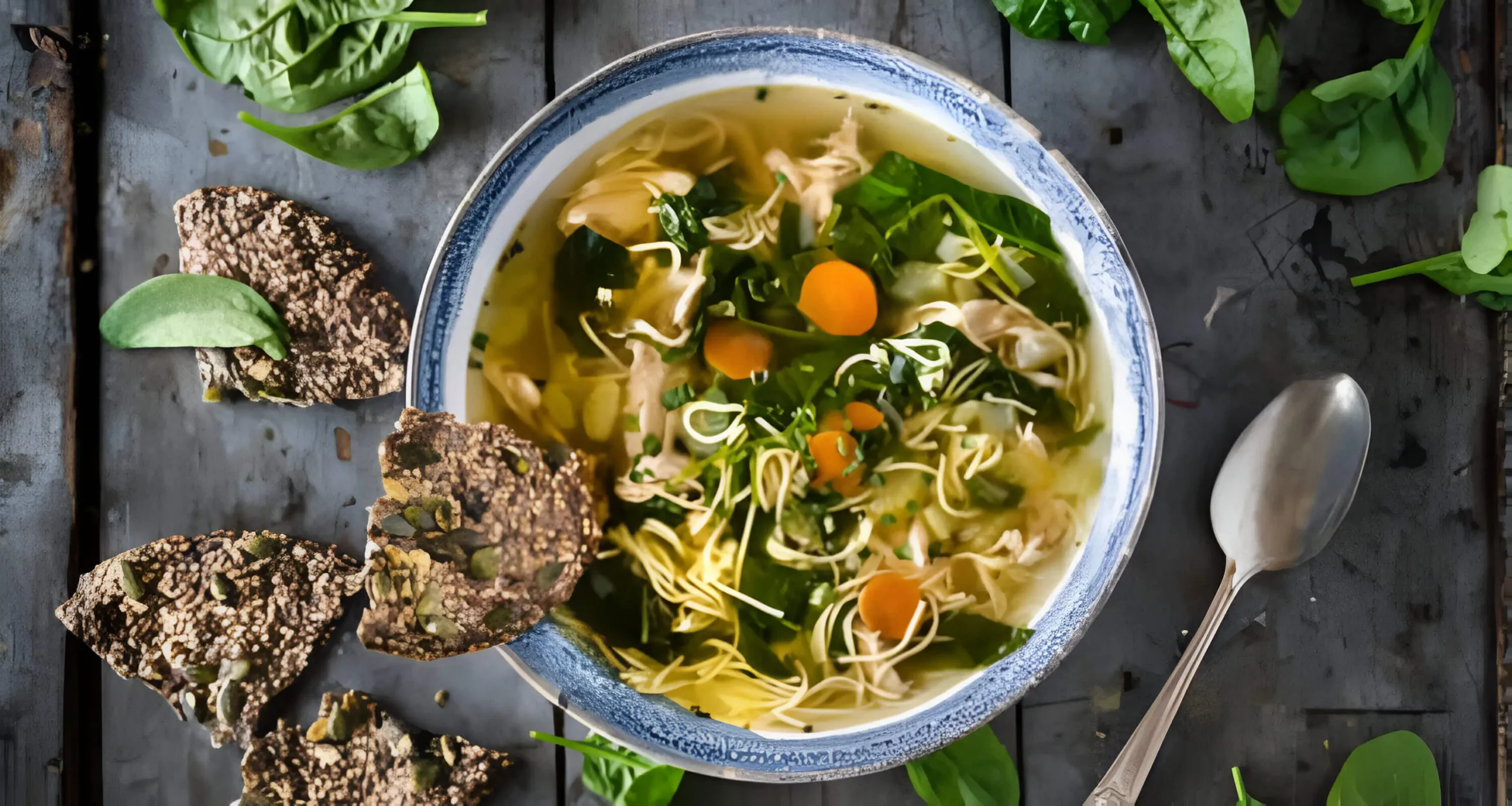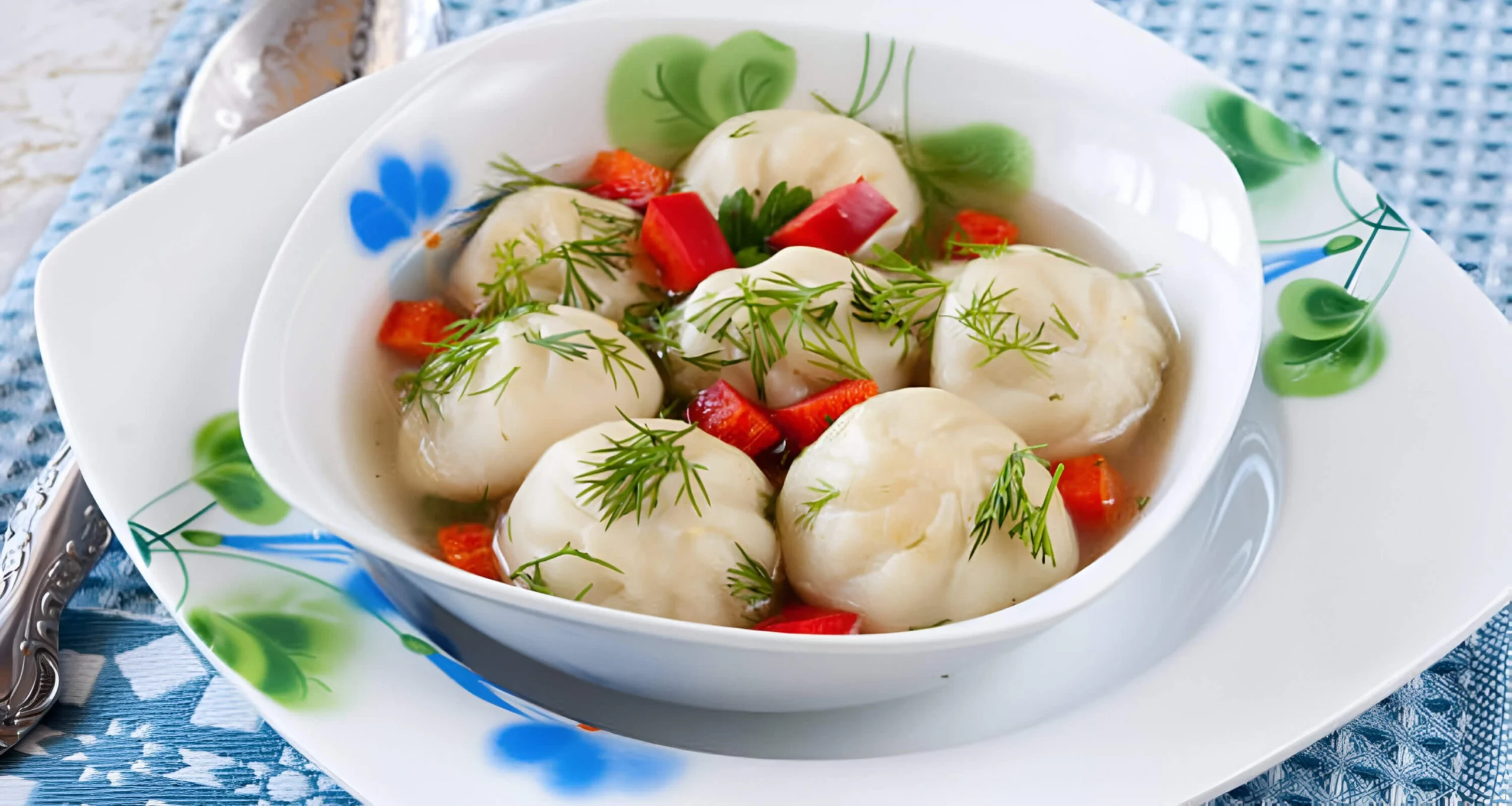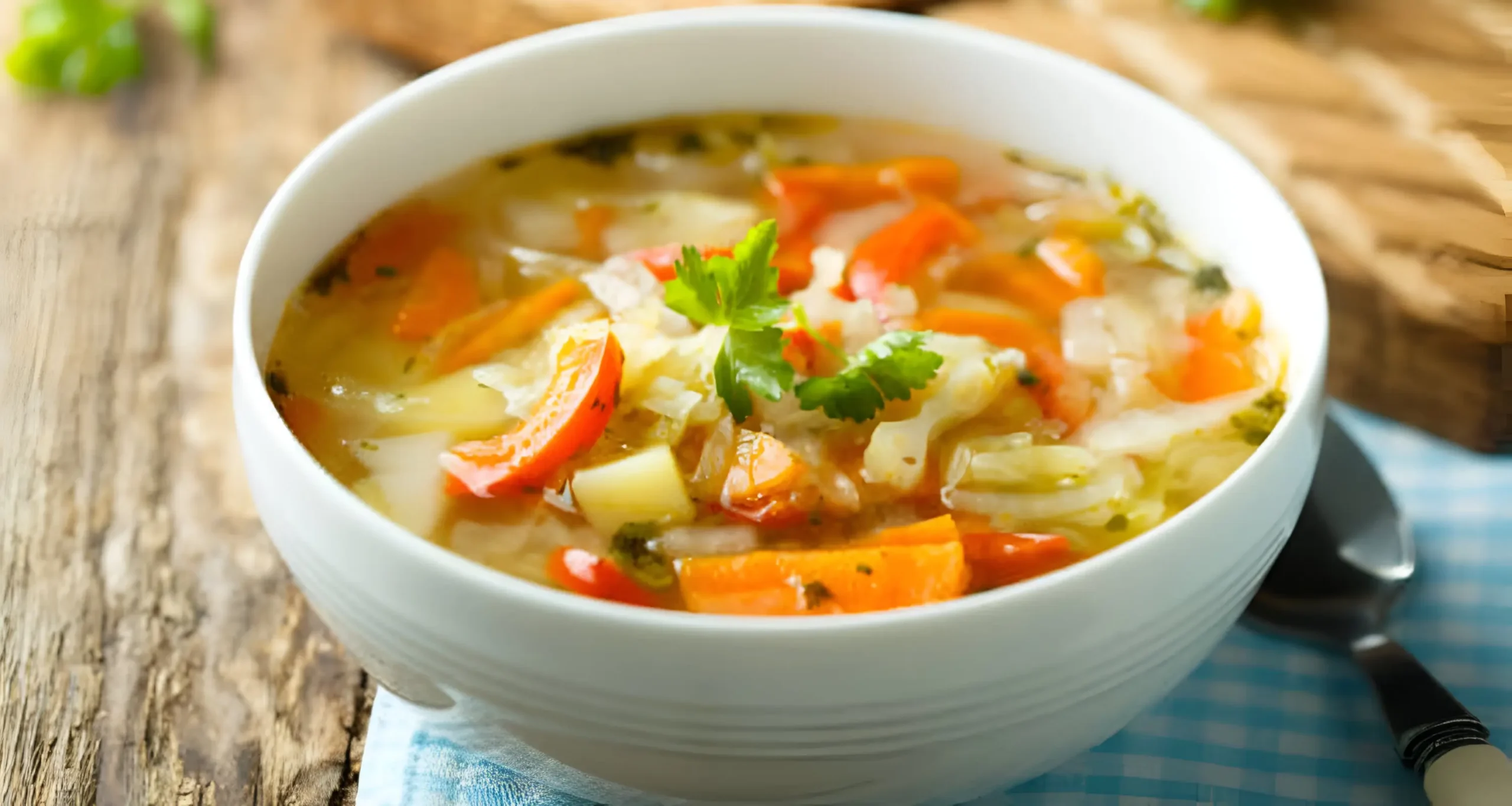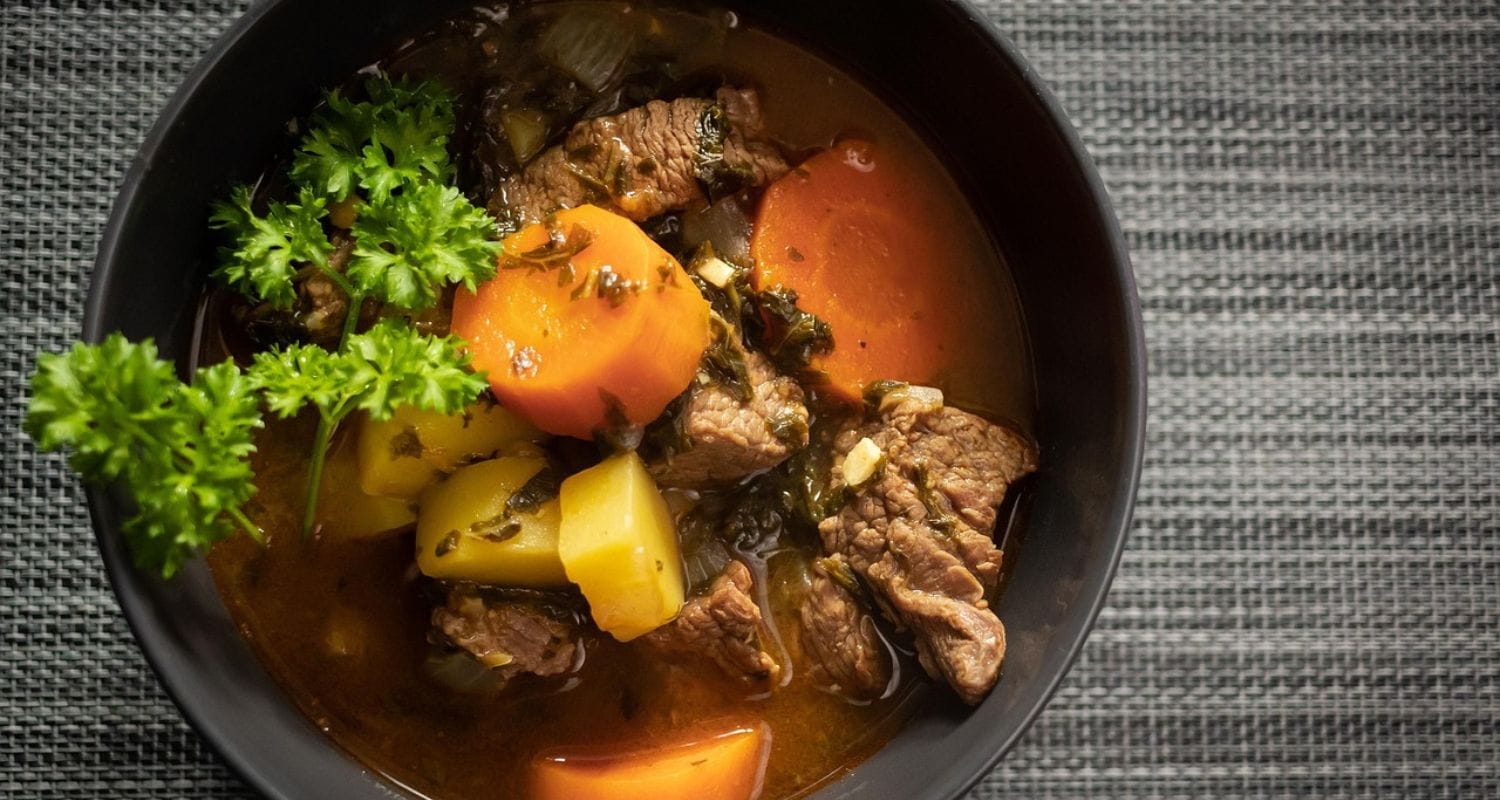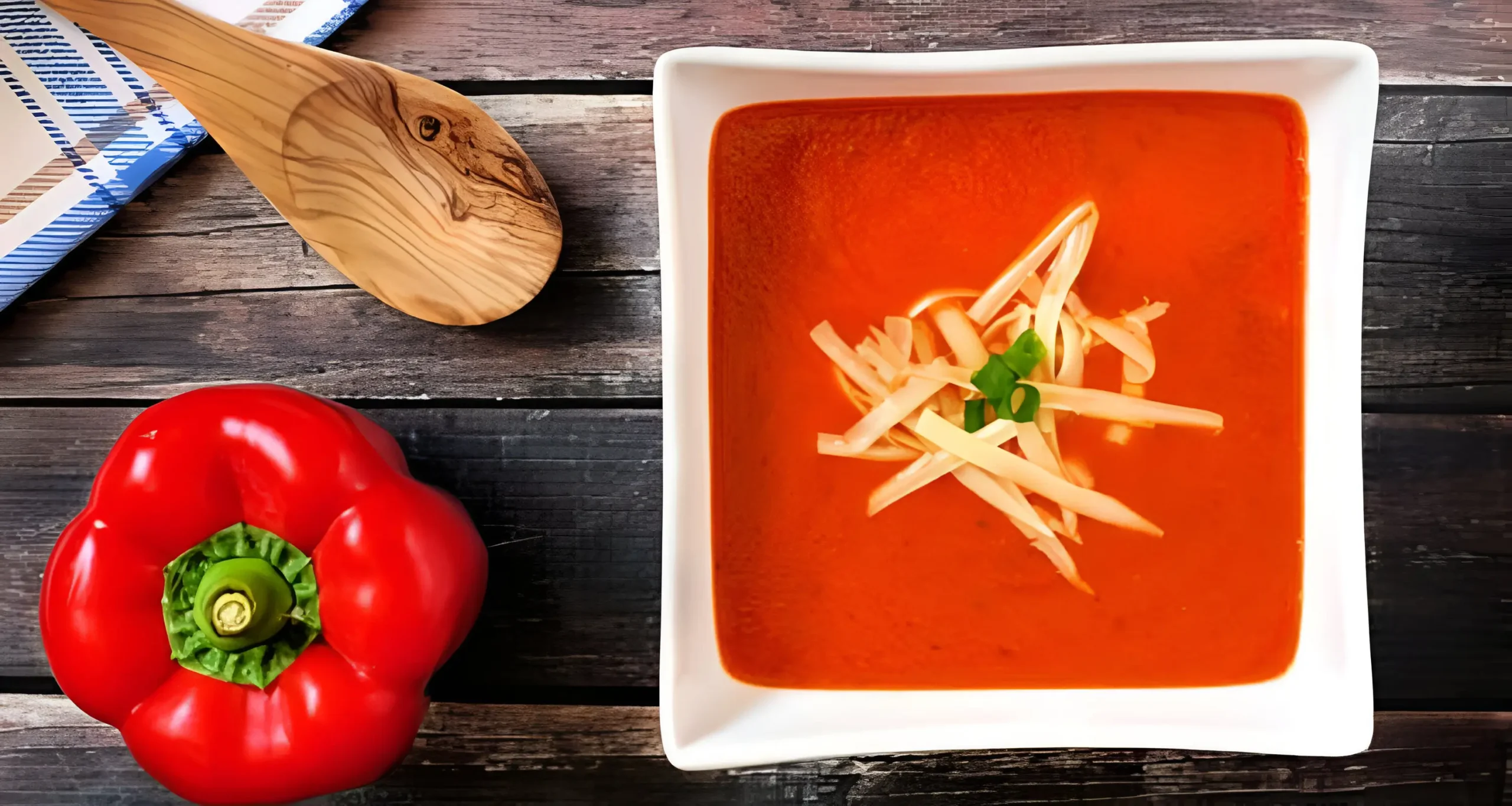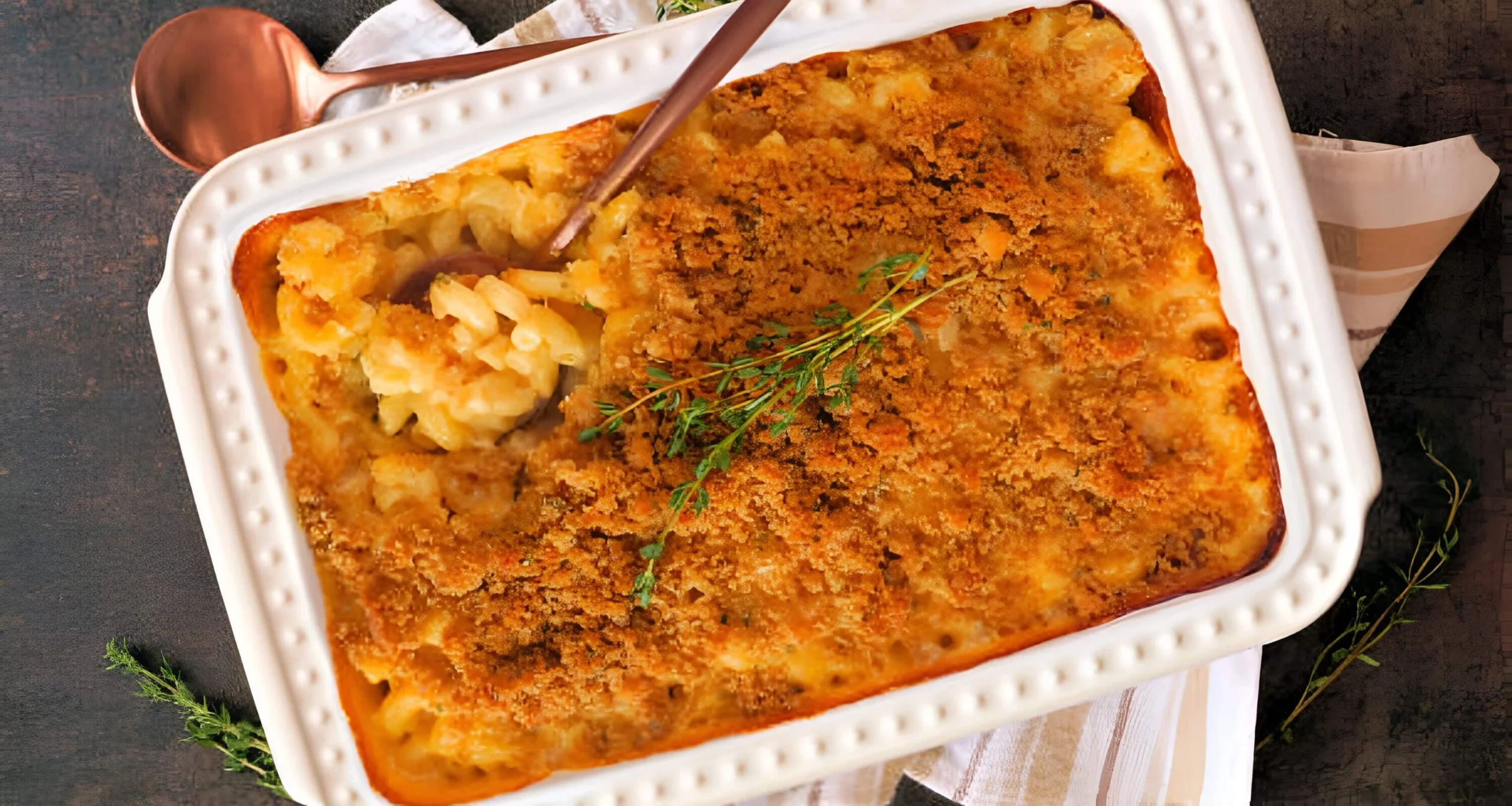French Onion Soup: 6 Healthy Twists You’ll Absolutely Love

I remember the first time I had French Onion Soup on a cold evening. The steam, the deep brown broth, and the caramelized onions were amazing. You probably love it too, and the thought of losing the cheesy crust or the rich flavor can be a letdown.
This guide will show you how to enjoy French Onion Soup without too many calories, sodium, or saturated fat. You’ll learn how to keep your caramelized onion soup rich and cheesy, just like the classic.
Keep reading for tips on low-fat caramelizing, broth and cheese swaps, bread alternatives (including gluten-free), protein additions, and six easy variations to try tonight. These will keep the flavor of your soup amazing.
Key Takeaways
- You can keep the authentic flavor of French Onion Soup while cutting calories and sodium.
- Simple methods help you caramelize onions with less fat but the same sweetness.
- Swapping stock, cheese, and bread reduces saturated fat without losing the cheesy appeal.
- Adding beans or shredded chicken increases protein without making the soup heavy.
- Herbs, aromatics, and acidic finishes brighten the soup and reduce salt needs.
Why you’ll want healthier French Onion Soup
You adore the rich taste of classic French Onion Soup. But, you can enjoy it with fewer calories, fat, and sodium. Making small changes keeps the flavor deep and satisfying.
Using less butter and full-fat cheese cuts down on saturated fat and calories. Low-sodium stock and less salt help control blood pressure. Adding white beans or extra veggies increases fiber and protein, making you feel fuller.
Getting the technique right is key to keeping it authentic. Caramelizing onions brings out their natural sweetness and depth. This lets you use less butter, sugar, or salt without losing the soup’s essence.
Miso, tomato paste, mushroom powder, or a bit of dry sherry can add the complexity of traditional beef consommé. A small amount of reduced-fat Gruyère or a mix of part-skim mozzarella and Parmesan keeps the dish creamy without too many calories.
For a comforting yet light meal, choose a healthier version of caramelized onion soup. It’s perfect for guests with dietary restrictions, like low-sodium or dairy-free diets.
Lightened French Onion Soup is great as a starter or for meal prep. It reheats well and stays creamy if you add cheese just before serving. This way, you enjoy a classic soup with better nutrition.
What makes classic french onion soup indulgent
Your first bowl of classic french onion soup is a feast for the senses. Sweet, slow-cooked onions blend into a rich broth. A crispy, cheesy top invites you to take a bite.
This mix of smooth soup and crunchy crust is what makes it so indulgent.
Traditional ingredients that add richness
Butter or olive oil is used for caramelizing onions. This process gives them a glossy look and a rich taste.
Beef stock or bone broth adds depth and body to the soup. A good stock makes the soup colorful and rich.
Dry white wine or sherry is added to deglaze the pan. This step brings out the flavors and adds a bright note. Gruyère cheese on top, broiled until golden, creates the signature gratinee.
Common calorie and sodium contributors
Cheese can add a lot of calories, up to 200 per serving. Bread soaked in the soup adds carbs and calories.
Butter and oil used for caramelizing add calories. Store-bought broths can be high in sodium, with one cup having hundreds of milligrams.
Some recipes include sugar or concentrated flavorings to speed up caramelization. These choices increase calories and sweetness without adding much nutrition.
Why gratinée style influences texture and flavor
The gratinée creates a crunchy, savory lid that contrasts with the warm broth. Broiling the cheese and bread together creates a caramelized top. This boosts the aroma and perceived richness.
The moment you pierce the crust is very satisfying. To make lighter versions, you can reduce cheese or choose lower-fat options.
How to caramelize onions for maximum flavor with less fat
Caramelizing onions is key to a rich, savory caramelized onion soup. You can achieve deep, sweet flavors with less fat by picking the right onions and using gentle heat. Follow these simple tips to make the best french onion soup in your kitchen.
Onion types that give the best sweet depth
Yellow onions are the top pick for a balanced sweetness in traditional french onion soup. Sweet onions like Vidalia or Walla Walla caramelize faster and need less fat. Red onions add color and a tangy note, perfect for vegetable-focused soups.
Try mixing yellow and sweet onions for a layered flavor without extra seasoning.
Low-fat techniques for caramelization
Use a nonstick or well-seasoned stainless steel pan to avoid extra oil. Start with a teaspoon of oil and add water or low-sodium stock to prevent sticking. Spray with olive oil for precise control.
Cook onions gently: soften over medium heat for 10–15 minutes, then lower to low and continue cooking for 30–45 minutes. This method prevents burning and achieves a deep color.
Deglaze the pan with balsamic vinegar, dry sherry, or water to enhance flavor. An immersion circulator or slow cooker can caramelize onions without fat if you watch the moisture. These methods may change the texture but keep the flavor sweet.
Tools and timing to get perfect onions every time
A heavy-bottomed skillet like cast iron or quality stainless steel ensures even heat. Use a wooden spoon or spatula to scrape the pan and avoid hot spots. Slice onions uniformly with a sharp knife or mandoline for even browning.
Plan for 10–15 minutes to soften, then 20–45 minutes to caramelize. Expect 30–45 minutes on medium-low for deep color. Keep the heat low; raising it can make onions bitter. Add a little liquid to lift fond and control the caramelization process. Then, fold those sweet onions into your next french onion soup or gratinee.
Swap the broth: healthier stock options for caramelized onion soup

You can make your French onion soup healthier without losing flavor. Start by choosing a base that complements the sweet, caramelized onions. This way, you can control the salt and richness.
Low-sodium broths keep the savory taste of classic French onion soup but with less salt. A reduced-sodium beef broth with 140 mg or less per serving adds meaty notes. For a lighter option, rich vegetable broths, like mushroom-based or roasted-vegetable, offer natural umami and body.
Mixing broths can enhance the flavor. Combine low-sodium beef broth with full-flavored vegetable broths. This mix layers meaty and vegetal notes, reducing saturated fat and sodium.
Quick homemade stocks are efficient and low on additives. Roast onion ends, carrot peels, celery pieces, garlic skins, and mushroom stems. Then, simmer 30–45 minutes with thyme and bay leaf. Strain for a fragrant, low-sodium base that supports long-simmered onions.
If you use a pressure cooker, concentrate bone or beef stock fast and freeze portions. Dilute later to the sodium level you prefer. For a pantry shortcut, choose brands like Pacific Foods low-sodium broths or make concentrated vegetable reductions to control salt.
Boost umami without extra salt by using small, potent additions. Dried porcini powder, a touch of tomato paste, or low-sodium Worcestershire add depth. Low-sodium miso dissolved into warm stock brings savory complexity; add a little at a time to avoid over-salting.
Other compact umami boosters include a splash of dry sherry, a swipe of roasted garlic, or a tiny pinch of anchovy paste in non-vegetarian versions. Tamari or low-sodium soy sauce adds richness for plant-based twists. Use these sparingly to keep flavors balanced.
| Option | Flavor Profile | Sodium Control | Best Use |
|---|---|---|---|
| Low-sodium beef broth | Deep, meaty | Easy to adjust; start low | Traditional or hybrid soups |
| Roasted vegetable broth | Sweet, caramelized vegetables | Low when homemade | Vegetarian classic french onion soup |
| Mushroom-based broth | Umami-rich, earthy | Low if made from scratch | Light, savory variations |
| Concentrated vegetable reduction | Intense, layered | Control by diluting | When you need stock on hand |
| Pressure-cooker beef/bone stock | Full-bodied, gelatinous | Adjustable after cooking | When you want richness with control |
Cheese and gratinée alternatives to cut calories
Want the golden top of classic french onion soup but less calories? Small changes can make a big difference. Select cheeses and toppings that preserve the gratinée’s appeal while reducing fat and carbs. These tips let you savor classic French onion soup with less guilt.
Lower-fat cheese choices that melt well
Part-skim Gruyère or Swiss-style cheeses offer authentic flavor and melt well at lower fat. Low-moisture part-skim mozzarella adds stretch, and a bit of grated Parmesan adds sharpness. For dairy-free options, cashew-based melts or vegan mozzarella work great under the broiler.
Creative toppings that preserve the gratinée appeal
Replace thick bread with thin-sliced ciabatta rounds, lightly brushed with olive oil spray. Top with a thin cheese layer for crunch without heavy bread. Toasted panko mixed with Parmesan and herbs creates a crisp crust using less cheese.
For extra protein and texture, spread a thin layer of mashed white beans or chickpea crepe before adding cheese. Layer roasted mushrooms or caramelized shallot confit between the bread and cheese to enhance flavor, letting you use less dairy.
Cooking methods for achieving a golden crust while using minimal cheese
Broil on high for 1–3 minutes to rapidly brown a thin layer of cheese. This matches the look of a rich gratinée with much less cheese. Pre-toast your crouton to prevent sogginess and use less starchy filler under the cheese.
Use a kitchen torch for precise browning and avoid over-broiling that can dry the soup beneath the crust.
You can enjoy the classic appeal of French onion soup while reducing calories. Using part-skim cheeses, thoughtful toppings, and a quick high-heat finish preserves both flavor and presentation.
Whole-grain and gluten-free crouton swaps
Changing the bread in your caramelized onion soup can make it healthier without losing flavor. Try using whole-grain baguette, sourdough, or sprouted grain slices. They add more fiber and nutrients. Thin slices also crisp up faster, keeping your soup crunchy on top and light at the bottom.
Healthy bread choices for croutons and toasts
For a traditional crunch, choose a multigrain or whole-grain baguette, which adds a nutty flavor that pairs perfectly with French onion soup. Sprouted grain loaves, like Ezekiel, add protein and stay firm when broiled.
For a tangy twist, try thin sourdough slices. They crisp quickly and balance the rich flavors of the broth.
How to make crunchy croutons with minimal oil
To make crunchy croutons with less oil, toss bread cubes with a light mist of olive oil. Add garlic powder and thyme, then bake at 375°F for 10–15 minutes, turning once. For an even lower-fat option, toast cubes dry in a skillet or oven. Lightly brush the bread with vegetable broth to promote even browning.
Gluten-free options that hold up under broiling
Choose dense gluten-free breads made from buckwheat, brown rice, or chickpea flour. They resist sogginess when broiled. Socca-style chickpea toasts cut into rounds are a protein-rich choice that crisps up fast.
Roasted polenta slices or baked sweet potato rounds are also great. They offer hearty, gluten-free alternatives that support the cheese and stay firm in hot bowls.
| Option | Texture | Best use under broil | Nutrition highlight |
|---|---|---|---|
| Whole-grain baguette | Crisp exterior, chewy center | Thin slices for fast crisping | Higher fiber than white bread |
| Sourdough | Crunchy, slightly tangy | Pairs well with rich broth | Improved digestibility from fermentation |
| Sprouted grain (Ezekiel) | Dense, holds toppings | Thin slices under broiler | More protein and minerals |
| Buckwheat or brown rice GF loaf | Firm, resists sogginess | Ideal for broiling short time | Gluten-free, whole-grain options |
| Socca (chickpea) rounds | Golden, crisp edges | Quick broil, adds protein | Gluten-free, high protein |
| Roasted polenta or sweet potato | Hearty, holds up well | Use as base instead of bread | Gluten-free, nutrient-dense |
These swaps keep your french onion soup light and adaptable to different diets. Use whole-grain croutons for extra fiber or choose gluten-free options that match the classic caramelized onion soup flavor.
Protein boosts that keep the soup light
You can make caramelized onion soup satisfying without heavy calories. Choose proteins wisely to keep the soup hearty and the broth clear. This way, you enjoy the classic french onion soup taste.
Add-ins like white beans or shredded chicken
White beans, such as cannellini or Great Northern, add a creamy feel and 7–10g protein per half-cup. They blend well with the onions without hiding their flavor.
Shredded rotisserie or poached chicken adds lean protein easily. Add it towards the end of simmering to keep it tender. Then, broil for a gratinée-style finish.
Canned tuna in water is great for a quick, bold protein boost in french onion soup.
Plant-based protein options for a vegetarian twist
Cooked brown or green lentils add protein and body. Simmer them separately and fold into bowls to keep texture.
Firm tofu, seared before adding, offers mild flavor and a light, protein-rich french onion soup variation for vegetarians.
Roasted chickpeas or crispy chickpea croutons add crunch and a pleasant contrast to silky onions and broth.
When to add protein for best texture and flavor
Delicate proteins like shredded chicken should go in at the end of simmering so they remain moist. Beans and lentils benefit from being pre-cooked or pressure-cooked, then stirred in during the last 5–10 minutes to absorb flavor without falling apart.
For gratinée bowls, tuck protein under the bread or mix it into the base so it heats through but avoids drying under the broiler. These small timing adjustments keep the soup light while boosting satiety.
| Protein | Protein per 1/2 cup | Best use | When to add |
|---|---|---|---|
| Cannellini beans | 7–10 g | Adds creaminess; blends with caramelized onions | Last 5–10 minutes |
| Shredded rotisserie chicken | 15–20 g (per 3 oz) | Lean, quick protein for classic french onion soup | End of simmering |
| Poached chicken breast | 18–21 g (per 3 oz) | Very tender; keeps soup light | End of simmering |
| Brown or green lentils | 9–12 g | Earthy texture for vegetarian versions | Cook separately; add last 5–10 minutes |
| Firm tofu (seared) | 8–10 g | Neutral flavor; plant-based protein option | Added before serving to retain texture |
| Roasted chickpeas | 7–9 g | Crispy topping that complements classic french onion soup | Sprinkle on top when serving |
| Canned tuna (in water) | 15–20 g (per 3 oz) | Nontraditional, quick protein addition | Fold in at end of simmering |
Flavor-enhancing herbs and spices that reduce salt

To make your French Onion Soup taste better and use less salt, focus on layers of flavor. These methods help you enjoy a classic French onion soup without too much salt.
Start with herbs like thyme and bay leaf. They add earthiness and warmth to your soup. Garnish with fresh parsley or chervil to add a bright, fresh flavor. This makes your soup seem saltier than it is.
Use aromatics and acids to enhance flavors. Deglaze the pan with dry sherry or white wine. This captures browned bits and adds acidity. A bit of sherry vinegar or lemon juice at the end brightens the soup, making it taste richer without salt.
Small amounts of certain ingredients can make a big difference. Tomato paste adds umami, while smoked paprika adds warmth without salt. A bit of black pepper, toasted fennel, or red pepper flakes adds complexity. This keeps your soup interesting even with less butter or cheese.
Finishing oils can also add richness. A few drops of walnut or sesame oil can make your soup seem fattier. Roasted garlic or a sprinkle of citrus zest at the end adds contrast and reduces the need for extra seasoning.
Meal planning and portion control for healthier servings
Proper portioning and smart meal planning help you enjoy the best french onion soup without overshooting calories. Use simple measures and a few prep habits to keep each bowl satisfying and balanced.
Portion sizes that satisfy without overdoing calories
A starter portion is about 1 cup (240 ml). For a main-course serving aim for 1.5–2 cups when you add protein or a small crouton. Measure with a ladle—about 1/2–3/4 cup per ladle—to keep portions consistent while meal planning.
Limit bread and cheese in each bowl. Use a thin 1/2-inch bread round and 1–2 tablespoons grated cheese for a gratinée that’s rich but not too heavy. These substitutions maintain the essence of classic French onion soup while reducing extra calories.
Pairing the soup with balanced sides for a full meal
Pair a smaller bowl with a mixed green salad and a light vinaigrette for a balanced dinner.Top the salad with grilled chicken or chickpeas to boost protein without adding extra bread.
For more fiber and nutrients, serve the soup with roasted vegetables or a whole-grain grain salad. If you need a heartier plate, choose a protein-forward side such as baked salmon or a seared tofu steak instead of extra bread.
Make-ahead and storage tips to preserve flavor and texture
Make the soup base ahead and refrigerate for 3–4 days. Add bread and cheese only at serving to preserve texture and the ideal gratinée. Freeze single portions in airtight containers for up to 3 months and thaw overnight in the fridge.
If you use beans or tender proteins, store them separately and combine when reheating to avoid over-softening. Reheat on the stovetop over medium-low heat, stirring and adding a splash of stock if the soup has thickened during storage. These steps keep your classic french onion soup tasting close to the best french onion soup you remember.
| Purpose | Action | Why it helps |
|---|---|---|
| Portion control | Use 1 cup starter / 1.5–2 cups main; ladle measure | Keeps calories predictable and supports meal planning |
| Gratinée limits | 1/2-inch bread round + 1–2 tbsp cheese | Maintains texture and flavor while reducing fat |
| Balanced sides | Mixed greens, roasted vegetables, or lean protein | Adds fiber and nutrients without extra bread |
| Make-ahead | Store base 3–4 days; freeze up to 3 months | Preserves flavor and aids efficient meal planning |
| Reheat method | Stovetop medium-low, stir, add stock if thick | Restores texture and prevents dryness |
Six healthy French Onion Soup variations you’ll love
Looking for a healthier French Onion Soup? Try a vegetable-forward version. It uses yellow onions, mushrooms, mushroom stock, and a bit of low-sodium miso. Finish with a vegan melting cheese to create a fiber-rich, plant-based soup ready in under an hour.
For a classic taste, go for a low-sodium beef French Onion Soup. Use low-sodium broth, roasted vegetable reduction, and a splash of sherry. Replace full-fat Gruyère with part-skim for a rich, yet lighter, gratinée.
Consider a white bean leek soup for protein and creaminess. It has cannellini beans and sautéed leeks. Serve the soup over whole-grain toast topped with a sprinkle of Parmesan or part-skim Gruyère for a well-rounded meal.
Need a quick weeknight dinner? Add shredded poached chicken with thyme and bay leaf to a light broth. Use thin whole-grain toasts and a small cheese amount to keep calories low while adding protein.
Follow plant-based eating? The plant-based miso caramelized onion soup is perfect. It uses miso paste and mushroom stock instead of beef. Finish with vegan melting cheese and roasted chickpea croutons for extra protein and crunch.
Need a gluten-free, dairy-free option? Try a French Onion Soup with gluten-free bread or baked polenta rounds. Use a chickpea flour topping or thin dairy-free cheese layer. Add crispy roasted chickpeas for texture and flavor without gluten or dairy.
Each variation comes with quick cooking times, key swaps, and assembly steps. You can start making your chosen soup right away. Serving-size guidance helps manage portions and understand nutrition improvements, like sodium or calorie reductions.
Conclusion
You can make classic french onion soup healthier with a few simple changes. Use water or low-sodium stock to finish caramelizing onions instead of butter. Choose low-sodium broths or make your own. Opt for part-skim cheese or alternatives.
Switch to whole-grain or gluten-free bread for the toast. Adding white beans or shredded chicken boosts protein and makes it more filling.
These adjustments preserve the soup’s deep flavor and smooth, creamy finish. Focus on slow cooking and layering flavors. This way, you get a delicious soup with less fat and salt.
Try a healthier version of french onion soup this week. See how it compares to your usual. Try making your own tweaks and share your experience with friends or on social media. Your changes can make the dish healthier and more enjoyable.
FAQ
What makes a French onion soup “authentic” and can you keep that when lightening the recipe?
Real French onion soup has caramelized onions, a flavorful stock, and a cheesy bread topping. To keep it authentic, focus on slow cooking the onions and using a good stock. Add a small amount of cheese on toasted bread for the final touch.Choose low-sodium broth or a rich vegetable stock. Add ingredients like miso or porcini powder for extra flavor without extra salt.
Which onions give the best caramelized onion soup flavor with less fat?
Sweet onions like Vidalia or Walla Walla caramelize quickly and taste sweet. Yellow onions add depth. Mixing yellow and sweet onions gives a richer flavor without extra butter. Use a nonstick pan and a splash of water or broth to keep ingredients from sticking, reducing the need for extra oil.
How do you caramelize onions with minimal oil and yet get deep flavor?
Begin by using a heavy-bottomed pan over medium heat to gently soften the onions. Then, lower the heat and cook for 30–45 minutes, stirring now and then. Use a little oil or oil spray and add small amounts of water or stock to prevent sticking.For an added depth of flavor, deglaze the pan with a splash of dry sherry, balsamic vinegar, or regular vinegar. This adds taste without adding fat.
What are the best low-sodium broth options for a lighter French onion soup?
Opt for low-sodium beef broth for a classic taste. Or, try a robust vegetable-mushroom stock for a vegetarian option. Mix a bit of reduced-sodium beef broth with vegetable stock for depth.Make your own quick stocks to control the salt. Roast scraps and simmer for 30–45 minutes.
How can you get the gratinée effect with less cheese and calories?
Use part-skim Gruyère or a blend of mozzarella and Parmesan. Pre-toast thin whole-grain or gluten-free toasts for crispiness. Next, broil a thin layer of cheese until it forms a golden, bubbly crust.For extra richness, add roasted mushrooms or caramelized shallots under the cheese.
What gluten-free and lower-carb bread alternatives work for the topping?
Dense gluten-free breads like buckwheat or brown-rice work well. Polenta rounds, baked sweet potato slices, or chickpea flour toasts add texture and protein. Toast them lightly beforehand to avoid sogginess when broiling with cheese.
Can I make French onion soup vegetarian or vegan without losing umami?
Yes. Use roasted vegetable broth and mushroom stock for depth. Add caramelized mushrooms for meatiness. Top with a vegan melting cheese or cashew-based cheese to finish the gratinée. Roasted garlic, tomato paste, and a splash of sherry also boost flavor.
What protein additions work best without weighing the soup down?
Cannellini or Great Northern beans add creamy protein and fiber. Shredded poached chicken or rotisserie chicken is lean. Add near the end to stay tender.For plant-based protein, use cooked lentils, pan-seared firm tofu, or roasted chickpeas as a crunchy topping.
How do you cut sodium without losing flavor in caramelized onion soup?
Use low-sodium broths and build flavor with umami-rich ingredients. Miso, porcini powder, tomato paste, or anchovy paste work well. Add aromatics like thyme and bay leaf, deglaze with sherry or wine, and finish with acidic lifts.
How should I portion and pair a lighter French onion soup for a balanced meal?
Serve about 1 cup as a starter; 1.5–2 cups as a main with added proteins. Keep the bread round thin and use 1–2 tablespoons of cheese. Pair with a green salad, roasted vegetables, or a simple grain salad for a complete meal.
Can you make French onion soup ahead and how do you store it without the bread getting soggy?
Make the soup base ahead and refrigerate for 3–4 days or freeze up to 3 months. Store bread and cheese separately and add them only when serving. Reheat the soup gently, add proteins at the end, place toasted bread on top, sprinkle cheese, and broil briefly for the gratinée.
Which six healthy variations should I try first to reduce calories and sodium?
Try these five-to-six starter options: vegetable-forward caramelized onion and mushroom soup (miso for umami), low-sodium beef-broth version with part-skim Gruyère, white bean and leek variation for added protein, chicken and herb adaptation for a heartier bowl, plant-based miso fusion with vegan melter, and a gluten-free dairy-free version with crispy chickpea croutons. Each strikes a balance between flavor and lighter nutrition.
How can small ingredient swaps reduce calories and saturated fat without changing texture?
Replace some butter with measured oil spray or use a teaspoon of oil plus water for caramelization. Swap full-fat Gruyère for part-skim versions or blend with grated Parmesan to get melt and flavor with less fat. Use whole-grain or thinner toasts to lower refined carbs while keeping the gratinée contrast of crisp bread and silky broth.
Add a Dash of Your Thoughts!
There are no reviews yet. Be the first one to write one.

